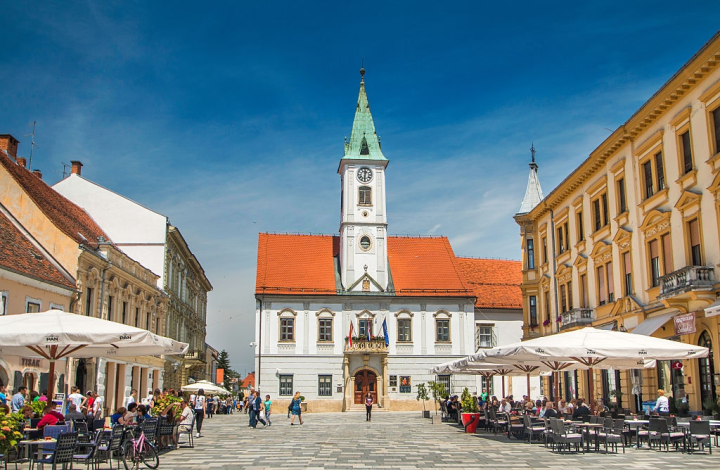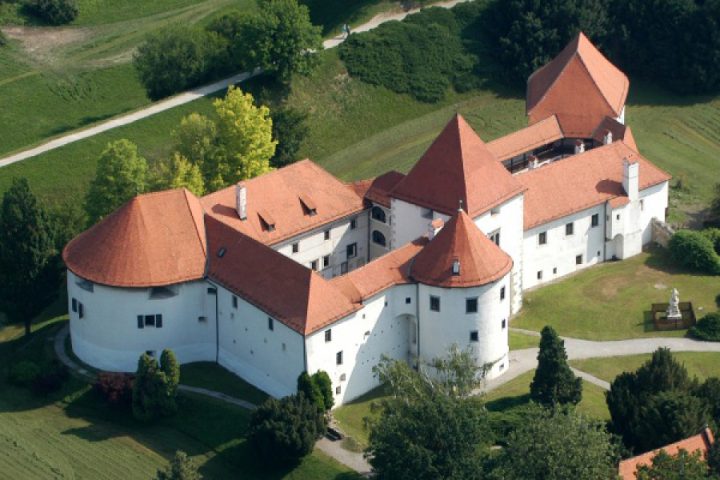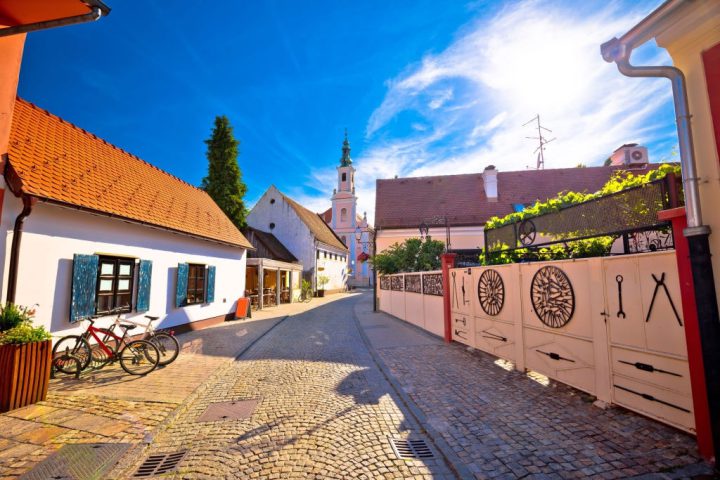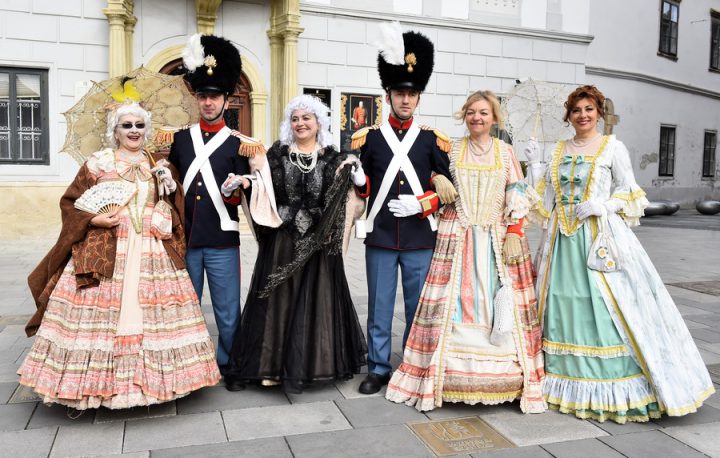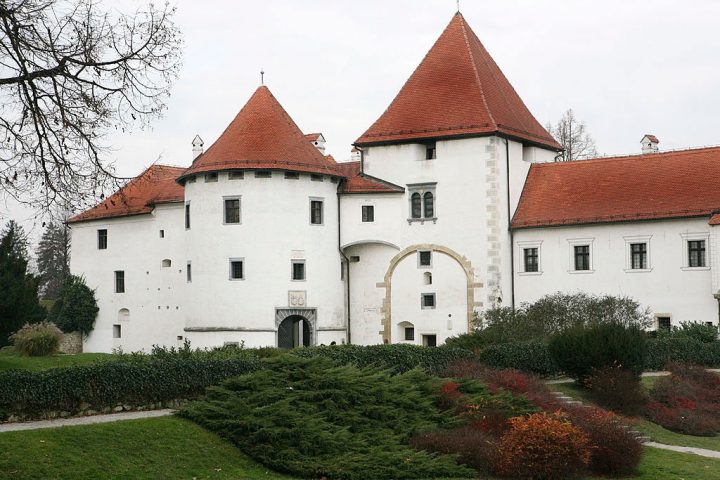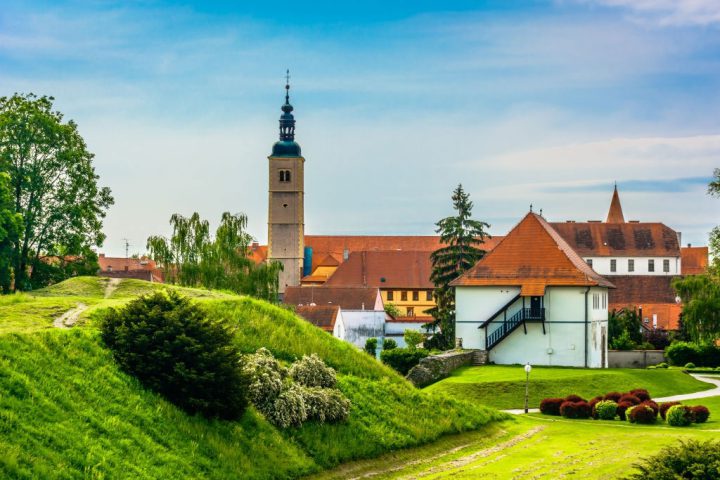Varaždin
Varaždin
Learn more about Varaždin
- About Varaždin
About Varaždin
The city of Varaždin is located in the northwestern part of Croatia and is located on the right bank of the Drava river. The height of the city above sea level varies between 169 and 173 meters. The average annual temperature is 10 ° C. The city stretches not far from the river Drava in a fertile alluvial plain that descends towards the southwest-northeast towards the river. In the south, the plains are gradually replaced by the Haloze and Varaždinsko-toplička gora mountains. Due to its geographical location, it borders on the regions of Steiermark, Međimurje, Zagorje and Upper Podravina.
Varaždin has around 50,000 inhabitants and is the cultural, educational, economic, sporting and tourist center of northwest Croatia. The city received the “Zeleni cvijet” (Green Flower) award eleven times as the most well-kept city in continental Croatia.
Varaždin, often called “the little Vienna” of Croatia, is a city brimming with Baroque charm, cultural heritage, and a laid-back atmosphere. It’s an ideal destination for those who appreciate history, architecture, and a slower pace of travel. Here are some of the best things to do in Varaždin:
Historical and Architectural Highlights
- Varaždin Old Town (Stari Grad): This is the heart of the city and an absolute must-see. The medieval fortress, surrounded by a moat, is now home to the Varaždin City Museum. You can explore its beautifully preserved walls, towers, and courtyards, and delve into the city’s rich history through its archaeological, historical, and cultural collections.
- King Tomislav Square: The main square is a vibrant hub lined with stunning Baroque palaces and the historic Varaždin Town Hall, one of the oldest in Europe. Grab a coffee, people-watch, and admire the beautiful facades. If you’re there on a Saturday, you might catch the ceremonial changing of the guard by the Varaždin Civil Guard (Purgari), a tradition on UNESCO’s list of Intangible Cultural Heritage.
- Varaždin Cathedral: This is a prime example of Baroque architecture with its pastel pink exterior and lavish interior. It’s a key landmark and a central venue for many of the city’s events, especially the Varaždin Baroque Evenings.
- Varaždin Cemetery: This isn’t just a burial ground; it’s a stunning example of park-like landscaping. Designed in the early 20th century, it features meticulously trimmed hedges, beautiful trees, and sculptures by prominent Croatian artists. It’s a peaceful and surprisingly beautiful place for a contemplative walk.
- Palaces and Churches: Wander through the streets and discover a plethora of beautiful Baroque palaces, such as Sermage Palace (which houses an art collection) and Drašković Palace. The city is also dotted with charming churches, including the Franciscan Church and the pink-hued Ursuline Church.
Museums and Culture
- Varaždin City Museum: Located within the Old Town fortress, this museum is a fantastic way to learn about the city’s past, from its early days as a fortress to its period as the capital of Croatia.
- Museum of Angels: Known as the “City of Angels,” Varaždin has a unique connection to these celestial beings. This small, themed museum is dedicated to the local artist’s work and explores the concept of angels in various artistic forms.
- Miljenko Stančić Gallery: If you’re an art lover, visit this gallery dedicated to the famous local artist, Miljenko Stančić. You can explore over 40 of his most renowned paintings.
- World of Insects: Housed in Herzer Palace, this museum is a fascinating stop for all ages, featuring a vast collection of thousands of insects from around the world.
Events and Festivals
- Špancirfest: If you visit in late August, you’ll experience this renowned street festival. For ten days, the city’s streets are filled with street performers, musicians, artisans, and a lively atmosphere that draws crowds from all over.
- Varaždin Baroque Evenings: Held annually in late September and early October, this world-class festival is a highlight for classical music enthusiasts. It features concerts by prominent orchestras and soloists, often performed in the city’s historical churches and palaces, creating a truly unforgettable experience.
Day Trips
- Trakošćan Castle: Just a short drive from Varaždin, this fairytale-like castle is perched on a hill overlooking a beautiful lake. It’s one of Croatia’s most picturesque castles and offers a fascinating look into noble life with its preserved museum collection.
Local Flavors
- Try Varaždinski Klipići: Don’t leave without trying this famous local bread roll. It’s a protected product and a delicious, savory treat.
- Enjoy the Coffee Culture: Like much of Croatia, Varaždin has a thriving café culture. Find a spot in one of the squares and enjoy a coffee while soaking in the Baroque scenery.
- Dine at Local Restaurants: Explore the local culinary scene. Restaurants like Restoran Bedem offer a modern take on local cuisine, while others provide a taste of traditional dishes.
Varaždin is a city with a unique character, deeply rooted in its history and culture. While its stunning architecture is what first catches the eye, a closer look reveals a host of interesting facts that make this Croatian gem even more captivating.
The “Little Vienna” of Croatia
- A Former Capital: For a brief but glorious period from 1756 to 1776, Varaždin served as the capital of Croatia. During this time, it was the seat of the Croatian Royal Council, the first Croatian government founded by Empress Maria Theresa. This era of prosperity and political importance is largely responsible for the city’s abundant Baroque palaces and the refined, Central European atmosphere that earned it the nickname “little Vienna.”
- The Great Fire of 1776: The city’s golden age as capital came to an abrupt end with a devastating fire in 1776 that destroyed a large portion of the city. While a tragic event, it ultimately led to the reconstruction of the historic core in the fashionable Baroque and Rococo styles of the time, shaping the city we see today. The fire caused the government to move back to Zagreb, which has remained the capital ever since.
Architectural and Urban Curiosities
- A “Wasserburg”: The city’s iconic Old Town fortress is a rare and well-preserved example of a Wasserburg, a moated castle. It was transformed in the 16th century with high earthen walls and moats filled with water to provide a strong defense against Ottoman raids.
- A Living Museum: The Varaždin Town Hall, built in 1523, is one of the oldest in Europe and has been in continuous use as a town hall since its construction.
- A “City of Angels”: Varaždin is often called the “City of Angels” due to the recurring motif of angels in its art and architecture. This is celebrated at the unique Museum of Angels, which showcases the work of local artists dedicated to this theme.
- The Park-like Cemetery: The Varaždin Cemetery is not just a burial ground but a testament to landscape architecture. Designed in the early 20th century, its beautiful manicured hedges and trees are shaped to integrate with the graves, creating a peaceful and artistic garden.
Cultural and Social Details
- The “Purgari”: The Varaždin Civil Guard (Purgari) is a historic ceremonial guard that has been a part of the city’s identity for centuries. Their weekly changing of the guard ceremony in front of the Town Hall is a popular attraction and has been recognized by UNESCO as an Intangible Cultural Heritage.
- The “Wine Doctors”: In the 17th century, the “Pinta” wine drinking association, founded by Count Baltazar Patačić, was a unique social club. To become a “wine doctor” one had to follow strict rules of wine consumption. Their witty response to the clergy’s disapproval was, “Who drinks well, sleeps well. Who sleeps well, does not make mistakes. Who does not make mistakes, goes to heaven. Therefore, who drinks well, goes to heaven.”
- The Musical Legacy: Varaždin has a deep-rooted musical tradition. Its annual Baroque Evenings festival is an internationally recognized event. The city also has a charming official organ grinder, who adds to the city’s musical atmosphere. An even more surprising musical fact is the existence of an 18th-century “jukebox” in the city museum, which looks like a wardrobe but plays music when opened and wound up.
- The “Madonna of Corn”: The Sermage Palace, which houses a collection of old masters, contains a painting called the “Madonna of Corn.” It’s a rare piece of art, as it is one of only about 80 paintings in Europe depicting the Virgin Mary in a dress made of a corn cob.
